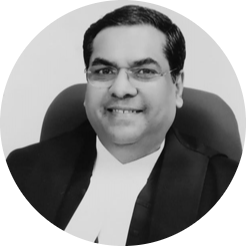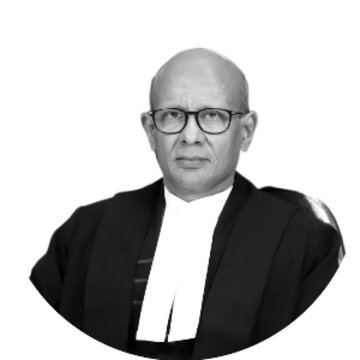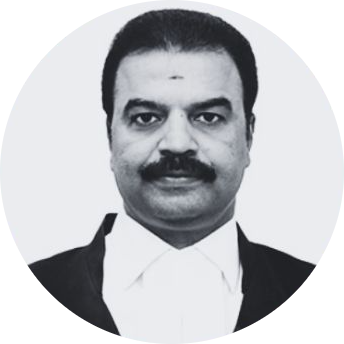Supreme Court: In set of criminal appeals one by the State of Bihar, through the Central Bureau of Investigation (‘CBI’), and the other by Rama Devi, the wife of one of the deceased— Brij Bihari Prasad, a member of the Bihar Legislative Assembly against a decision of the Patna High Court reversing the Trial Court’s decision convicting the nine accused persons, the three-Judge Bench of Sanjiv Khanna, Sanjay Kumar and R. Mahadevan, JJ. partially allowed the appeals and restored the Trial Court’s decision to convict the two of the accused persons (A-4 and A-8), including Vijay Kumar Shukla (former MLA Munna Shukla). The Court set aside the High Court’s decision in reference to these two accused persons, however, giving the benefit of doubt, the Court refused to interfere with the impugned decision in reference to the other accused persons.
Factual Matrix
The deceased — Brij Bihari Prasad served as Minister for Science & Technology; Energy and Rural Development in Bihar. On 13-06-1998 at around 6:30 p.m., the deceased who was in judicial custody and was admitted for treatment at IGIMS hospital, was walking outside the wardroom along with his deceased bodyguard, a member of the Bihar police and others. Six people/ accused persons came out of the vehicles and shot dead the MLA and his bodyguard. Primarily relying on the testimonies of prosecution witnesses, the Trial Court convicted the nine accused persons. However, the High Court reversed the Trial Court’s decision and acquitted them of the charges punishable under Sections 302, 307, 333, 355 and 379, all read with Section 34 of the Penal Code, 1860, and Section 27 of the Arms Act, 1959.
Analysis and Decision
Foremostly, the Court agreed with High Court’s view that the eye witness, whose testimony was relied upon by the Trial Court was not present at the spot, hence, his deposition as an eye-witness could not be believed, since his name was not mentioned as one of the persons present at the place of occurrence in the fardbeyan, as also in the FIR. Moreover, his statement under Section 161 of the Code of Criminal Procedure, 1973 (‘CrPC’) was recorded on 18-06-1998, i.e., five days after the date of occurrence.
Perusing the statement of PW-1/ brother-in-law of Brij Bhushan, and his cross-examination, the Court said that his core testimony cannot be considered as dented for not remembering the number of the hospital room or whether it was south-facing or not; for not seeking prior permission from the Court or the jail authorities to visit Brij Bihari Prasad in the hospital; nor did he make any entry into the hospital register. The Court stated that- “once the presence of a witness at the place of occurrence is proven, their testimony, if credible and truthful, should not be dismissed solely based on non-compliance with hospital and prison protocols.”
Regarding the contradictions in the presence of A-9 as an assailant at the hospital, the Court noted that PW-1 identified A-9 at the hospital, but in his Court testimony, he stated that A-9 was not present. The Court opined that this contradiction did not weaken PW-1’s statement witnessing A-4 and A-8 committing the offence. The Court observed that, Indian law does not recognise the doctrine — falsus in uno, falsus in omnibus. In this reference, the Court relied on Deep Chand v. State of Haryana, (1969) 3 SCC 890, wherein, it was observed that the maxim falsus in uno, falsus in omnibus is not a sound rule to apply in the conditions of this country and does not occupy the status of rule of law.
Apropos, the testimony of PW-25 and its rejection by the High Court on the ground that he was accused in a murder case and had absconded despite being convicted in appeal, while he was being examined as a witness in the present case. The Court mainatained that the criminal background of a witness necessitates that the Courts approach their evidence with caution. The testimony of a witness with a chequered past cannot be dismissed as untruthful or uncreditworthy without considering the surrounding facts and circumstances of the case, including their presence at the scene of the offence. The crucial test is whether the witness is truly an eyewitness and whether their testimony is credible. If their presence at the scene is established beyond doubt, their account of the incident can be relied upon. Such evidence cannot be discarded merely on the grounds of criminal background.
For PW1-10 who was declared hostile by the prosecution, the Court reiterated that the evidence of a hostile witness is not to be completely rejected, to exclude versions that support the prosecution. Rather, the testimony of the hostile witness is to be subjected to close scrutiny, thus enabling the Court to separate truth from falsehood, exaggerations and improvements. Only reliable evidence should be taken into consideration. The Court also used the the testimony of Rama Devi to partly corroborate and affirm the testimonies of PW-1, PW-25, and PW-10. Her testimony also shed light on animosity between the rivals.
Further, the Court added that PW-1 and PW-25 identified the vehicles used by the accused persons on 13-06-1998. However, given the facts and circumstances of the case, the failure of the police to recover the vehicles and the weapons was not sufficient to undermine the credibility of the eyewitness accounts or the corroborative evidence regarding the cause of the homicidal deaths of Brij Bihari Prasad and his bodyguard.
Hence, the Court concluded that depositions of PW-1, PW-25 and, to some extent of Rama Devi and PW-10 with other evidence and material were conclusive enough to prove the charge against A-4 and A-8. Therefore, the Court held that, the charge under Section 302 read with Section 34; Section 307 of the IPC A-4 and A-8 was proven and established beyond reasonable doubt. The Court affirmed and restored the conviction and sentence awarded to them by the Trial Court.
The Court sentenced that both shall undergo imprisonment for life with a fine of Rs. 20,000/- each under Section 302 read with Section 34 of the IPC, and in addition to undergo rigorous imprisonment for five years with a fine of Rs. 20,000/- each under Section 307 read with Section 34 of the IPC. Both the sentences shall run concurrently.
Regarding the question of conspiracy and the evidence against A-1, A-2, A-3 and A-6 and A-9, there was no direct ocular evidence implicating them through the testimonies. Since the charge of conspiracy was not substantiated, the Court refused to interfere with the judgment of the High Court acquitting these five accused persons, and they are entitled to the benefit of the doubt.
CASE DETAILS
|
Citation: Appellants : Respondents : |
Advocates who appeared in this case For Petitioner(s): For Respondent(s): |
CORAM :











